Related Research Articles

Nikolai Ivanovich Bukharin was a Bolshevik revolutionary, Soviet politician, Marxist philosopher and economist and prolific author on revolutionary theory.
The ten years 1917–1927 saw a radical transformation of the Russian Empire into a socialist state, the Soviet Union. Soviet Russia covers 1917–1922 and Soviet Union covers the years 1922 to 1991. After the Russian Civil War (1917–1923), the Bolsheviks took control. They were dedicated to a version of Marxism developed by Vladimir Lenin. It promised the workers would rise, destroy capitalism, and create a socialist society under the leadership of the Communist Party of the Soviet Union. The awkward problem, regarding Marxist revolutionary theory, was the small proletariat, in an overwhelmingly peasant society with limited industry and a very small middle class. Following the February Revolution in 1917 that deposed Nicholas II of Russia, a short-lived provisional government gave way to Bolsheviks in the October Revolution. The Bolshevik Party was renamed the Russian Communist Party (RCP).

Grigory Ivanovich Kulik, a Soviet military commander and Marshal of the Soviet Union, served as chief of the Red Army's Main Artillery Directorate from 1935 until June 1941. Known as an incompetent commander with a knowledge of military technology "frozen in 1918", he dismissed innovations such as tanks, anti-tank guns, and the Katyusha rocket launcher; only his personal friendship with Stalin protected him from criticism. He had a reputation as a buffoon and a bully, who would shriek at subordinates who disagreed with him: "Prison or a medal!" On Stalin's orders, he was dismissed from his posts in 1946, arrested in 1947, and executed for treason in 1950.
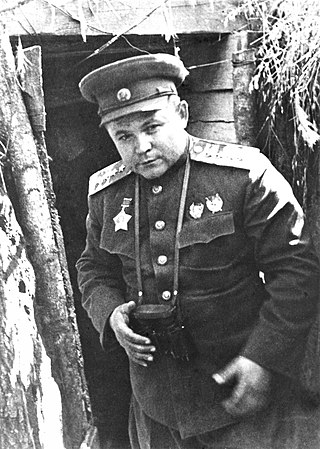
Nikolai Fyodorovich Vatutin was a Soviet military commander during World War II who was responsible for many Red Army operations in Ukraine as the commander of the Southwestern Front, and of the Voronezh Front during the Battle of Kursk. During the Soviet offensive to retake right-bank Ukraine, Vatutin led the 1st Ukrainian Front, which was responsible for the Red Army's offensives to the west and the southwest of Kiev and the eventual liberation of the city.
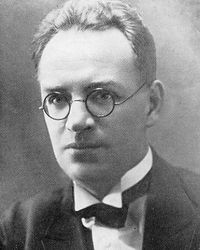
Boris Andreyevich Pilnyak was a Russian and Soviet writer who was executed by the Soviet Union on false claims of plotting to kill Joseph Stalin and Nikolay Yezhov.

The Battle of Narva was a World War II military campaign, lasting from 2 February to 10 August 1944, in which the German Army Detachment "Narwa" and the Soviet Leningrad Front fought for possession of the strategically important Narva Isthmus.
Deep operation, also known as Soviet Deep Battle, was a military theory developed by the Soviet Union for its armed forces during the 1920s and 1930s. It was a tenet that emphasized destroying, suppressing or disorganizing enemy forces not only at the line of contact but also throughout the depth of the battlefield.

The Battle of Humin-Bolimów was an inconclusive battle of World War I fought on January 14, 1915 - February 28, 1915 between Imperial German Army and Russia and considered a preliminary to the Second Battle of the Masurian Lakes.

The Vyborg–Petrozavodsk offensive or Karelian offensive was a strategic operation by the Soviet Leningrad and Karelian Fronts against Finland on the Karelian Isthmus and East Karelia fronts of the Continuation War, on the Eastern Front of World War II. The Soviet forces captured East Karelia and Vyborg/Viipuri. After that, however, the fighting reached a stalemate.
Vladimir Kiriakovitch Triandafillov was a Soviet military commander and theoretician considered by many to be the "father of Soviet operational art".

Dekulakization was the Soviet campaign of political repressions, including arrests, deportations, or executions of millions of kulaks and their families. Redistribution of farmland started in 1917 and lasted until 1933, but was most active in the 1929–1932 period of the first five-year plan. To facilitate the expropriations of farmland, the Soviet government portrayed kulaks as class enemies of the Soviet Union.

Timofey Timofeyevich Khryukin was a Soviet aviator, Spanish Civil War volunteer, and colonel-general of the Soviet Air Force. Emerging from an impoverished working-class background, he rose to command the 8th Air Army and 1st Air Army during the Second World War, being twice decorated as a Hero of the Soviet Union before his death following a period of illness caused by a road accident.

The Monastir offensive was an Allied military operation against the forces of the Central Powers during World War I, intended to break the deadlock on the Macedonian front by forcing the capitulation of Bulgaria and relieving the pressure on Romania. The offensive took the shape of a large battle and lasted for three months and ended with the capture of the town of Monastir. On an average depth of 50 kilometers, the Bulgarian First Army gave battle on six occasions and was forced to retreat five times.
The Shamkhor massacre or the Shamkhor incident, took place on 22–25 January 1918, Shamkir, Azerbaijan. The Azerbaijani armed groups, acting on orders from the Military Council of Nationalities, massacred Russian soldiers who were returning home from the Caucasus Front, in an effort to obtain sufficient arms.
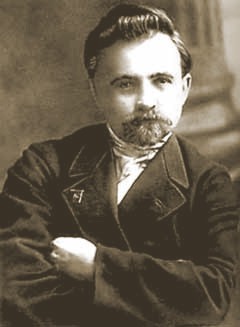
Yevgeni Alekseyevich Preobrazhensky was a Russian revolutionary, Soviet economist and sociologist. A member of the governing Central Committee of the Bolshevik faction and its successor, the All-Union Communist Party, Preobrazhensky is remembered as a leading voice for the rapid industrialisation of peasant Russia through a concentration on state-owned heavy industry.
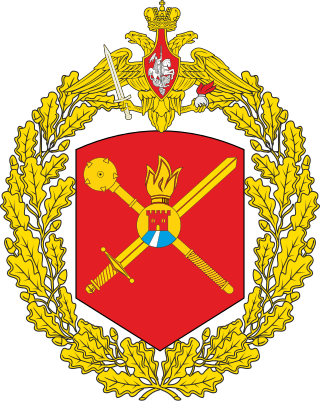
The 49th Combined Arms Army is a combined arms (field) army (CAA) of the Russian Ground Forces, formed in 2010 and headquartered in Stavropol.
The Great Turn or Great Break was the radical change in the economic policy of the USSR from 1928 to 1929, primarily consisting of the process by which the New Economic Policy (NEP) of 1921 was abandoned in favor of the acceleration of collectivization and industrialization and also a cultural revolution. The term came from the title of Joseph Stalin's article "Year of the Great Turn" published on November 7, 1929, the 12th anniversary of the October Revolution. David R. Marples argues that the era of the Great Break lasted until 1934.
Leonid Grigorevich Petrovsky was a Soviet lieutenant general. He was the oldest son of Grigory Petrovsky. He was born in what is now Donetsk Oblast in Ukraine. He was promoted to Komkor from Komdiv in 1937. While in command of forces in Central Asia, he was removed from command and expelled from the army. He was not executed like many of his colleagues. In 1940, he was reinstated in the army. He was a recipient of the Order of the Red Banner, the Order of the Red Star and the Order of the Patriotic War. Less than a month after his death, his younger brother, Peter was executed on September 11, despite a request from his father for his release.
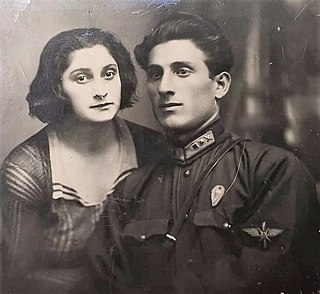
Varlam Urdia was a Soviet bomber and fighter pilot of Georgian origin who took part in numerous bombing campaigns and aerial dogfight battles against the German Luftwaffe during the World War II. He took an active part in the bombing raids of German positions on the Voronezh Front by piloting PS-84 and Ilyushin Il-2 ground attack fighter aircraft during the Operation Barbarossa and in aerial battles on the Caucasus front. For his service in 1942-43, Colonel Urdia was awarded twice with the Order of the Patriotic War 1st Class and in 1944 with the Order of the Red Banner for extraordinary heroism and courage demonstrated on the battlefield.

Air Intelligence of the Russian Air Force is a branch of Russian air force responsible for creating an intelligence picture for Air Force missions and participating in creating an overall intelligence picture. Russian aerial reconnaissance is one of the oldest in the world and began to operate back in 1911. Includes a number of reconnaissance and research units on various topics related to air warfare and collaborates with the Military Intelligence Directorate.
References
- ↑ Paddy Griffith (1994). Battle Tactics of the Western Front: The British Army's Art of Attack, 1916-18. Yale University Press. p. 32.
- ↑ "breakthrough" . Oxford English Dictionary (Online ed.). Oxford University Press. (Subscription or participating institution membership required.) - "Observer 20 June 8/4 (headline) The break through."
- ↑ Harper, Douglas. "breakthrough". Online Etymology Dictionary . Retrieved 2017-01-30.
- ↑ Stalin, I (1929-11-07). "Год великого перелома: к XII годовщине Октября" [The year of the great breakthrough: towards the twelfth anniversary of October]. Pravda (in Russian). No. 259. Moscow. Retrieved 2017-01-30.
Истекший год был годом великого перелома на всех фронтах социалистического строительства. Перелом этот шел и продолжает идти под знаком решительного наступления социализма на капиталистические элементы города и деревни. [This year has been the year of the great breakthrough on all fronts of the construction of socialism. This breakthrough took place and continues to take place under the sign of a determined attack by socialism on the capitalist elements in town and country.]
- ↑ Gellately, Robert (2007). "9: Stalin's new initiatives". Lenin, Stalin and Hitler: The Age of Social Catastrophe. Random House (published 2012). p. 165. ISBN 9781448138784 . Retrieved 2017-01-30.
Under the heading 'Year of the Great Breakthrough' (perlom)[sic], Stalin gave a review of the Five-Year Plan for Pravda on November 3, 1929. The occasion was to celebrate victories on various fronts on the anniversary of the Russian Revolution. The justification for the intense industrialization drive was couched in typically military language [...].